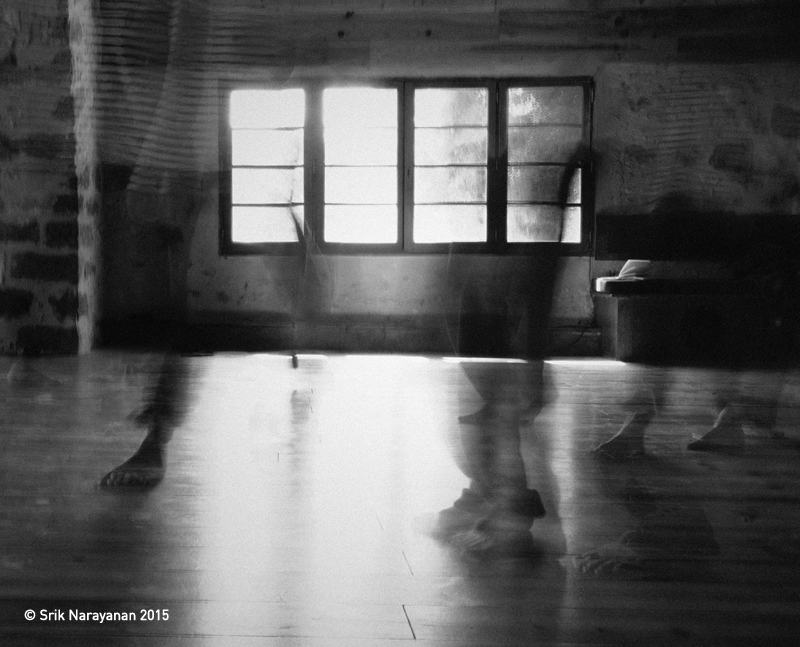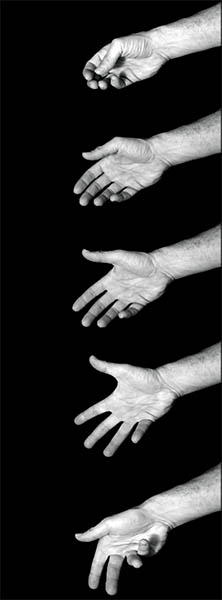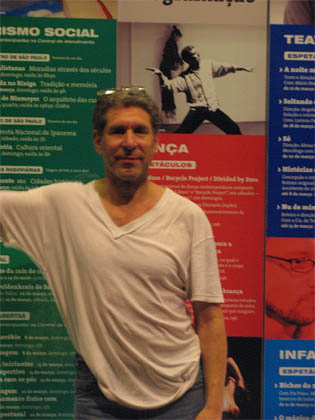
MOVING THE ENVIRONMENT:QUESTIONS INTO FORM
a dance technique and approach to movement research
developed by: Daniel Lepkoff

| Photo by: Srik Nayaranan Moving the Environment: workshop with Daniel Lepkoff & Sakura Shimada La ferme, France (2015) |
"All our movement is improvised and is a spontaneous dialogue with the environment.
Underneath our task oriented civilized, social, and political lives we are in a constant stream of communication with our environment. With all our senses we reach into the immediate future, so we can prepare and be ready to meet gracefully and without injury whatever will happen next.
This is how, as animals, we survive. It is a dance. It is music. Our choices are expressions of our imagination and intelligence.
Most of us do not consciously participate in this activity. We once did, when we were teaching ourselves how to crawl, to walk. We had to experiment, to fall.
This level of physical activity is what we look at in my work, bringing back the mystery, music, and wildness of our physical lives as animals. The work present techniques, experiments, and concepts that enable you to look into the details of a moment and provides you with simple tools to do your own movement research, to find and shape your own voice as a dancer, performer, and human being.
When you jump up, you push the earth down and the earth pushes you up. When you walk you leave footprints in the sand; you move the surface on which you stand and that surface moves you. Moving the environment.
It is a special skill to perform with the understanding and humor that the audience is also moving you. What is actually created in the theater is created by everyone in the room" — Daniel Lepkoff, March 2019
This approach to dancing looks at the form and composition of our ongoing interactions with our environment as "danced composition". The work is open to anyone interested in movement as a language for communication.

| Photo by : Daniel Lepkoff |
In any moment our perceivable options have all to do with our awareness of detail. Specific exercises look at the details inside of ordinary movement: stillness, breathing, resting, rolling, crawling, standing, walking, spiraling, running, reaching, falling, pushing, pulling, seeing, listening...
Stretching our perceptions is a process of refining and articulating our sensory landscape and having strategies for questioning what we think/feel we know. Questions Into Form.
Exercises are drawn from Daniel's ongoing movement research and practice, a long history as one of the founders of Contact Improvisation, one of the early pioneers of Anatomical Releasing Technique, as well as long term collaborations with artists: Steve Paxton, Lisa Nelson, Simone Forti, Channel Z, Paul Langland, Oleg Soulimenko, and others.
Simple solo and ensemble scores provide a format for manifesting our movement choices in the frame of time and space. We are playing in perceptual space. Each of us are both observer and actor. The studio space is a shared multilayered frame, perceived differently by each participant. A container of our images.
For more information on Daniel's approach go to: Daniel's writings on dance.
If you are interested in presenting this workshop please write to: Daniel Lepkoff
Short Biography more info on daniel website.

| Photo by: Sakura Shimada Sao Paolo, Brazil (2012) |
Beginning in the early '70's Daniel Lepkoff played a central role in the development of Release Technique with Mary Fulkerson and John Rolland, and Contact Improvisation with Steve Paxton.
Through ongoing experimentation with new forms of performance, exploring specific questions about movement with students in workshops, intense periods of personal movement research, and an ongoing stream of
collaborations with improvising artists, Daniel has slowly expanded and deepened his understanding of functional movement and the presence of the imagination in the body.
As a performer he is known for composing dances that arises from the process of living movement and as a teacher for his continual invention of original techniques, making direct
contact with information and pursuing questions together with students.
He is one of the founders of Movement Research in NYC. He works internationally and lives on a piece of land in Vermont.